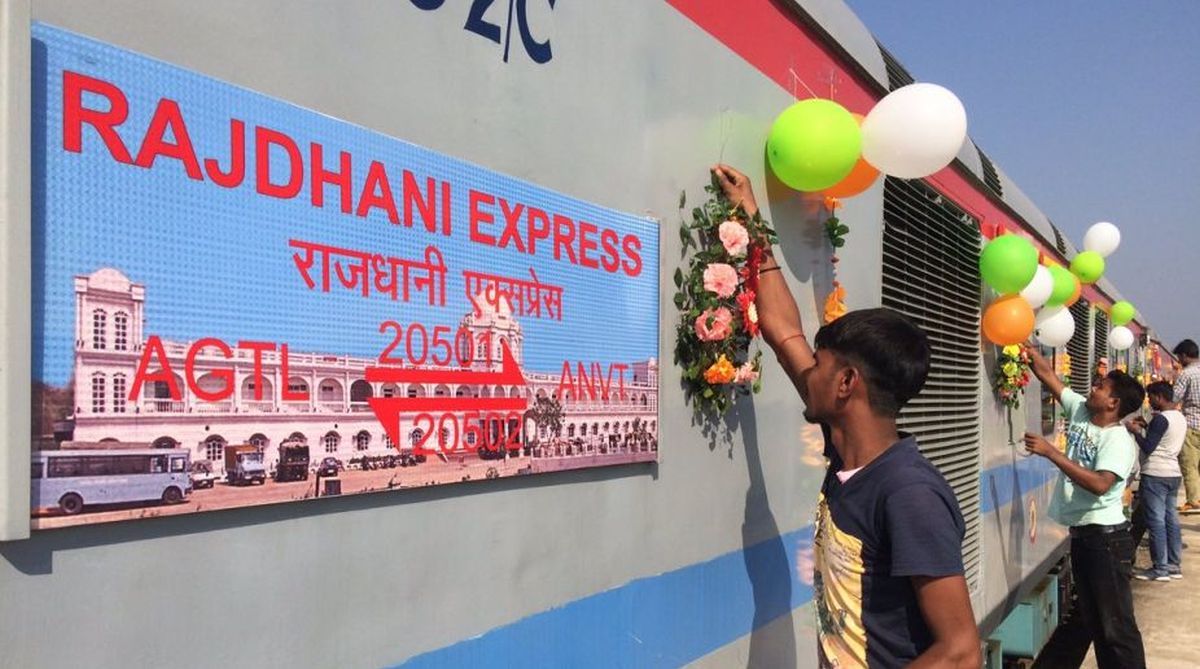Trains running across the country like premium Rajdhani Express, Shatabdi Express, Duronto, etc. will become a thing of the past as the Indian Railways has decided to phase out the premium trains, The Railways has made an ambitious roadmap to run semi-high speed trains (160-240 kmph) Vande Bharat and train sets.
The Railways claims that in the next two years, semi-high speed trains between Delhi-Mumbai and Delhi-Kolkata will start filling whereas the target is to connect other metros and big cities of the country in the Amrit period.
A senior Railway Ministry official said that the electricity, signaling system, track, rolling stock (engine-coach) of Indian Railways will need to be completely replaced to run semi-high speed trains. To make rail travel fast, a comfortable and safe state-of-the-art technology in railroad facing and train operation will have to be implemented.
He said ICF and LHB coaches have become old technology now. For this, Rajdhani, Shatabdi, Duronto and Superfast trains will be replaced by Vande Bharat Express and train sets equipped with new state-of-the-art technology. These trains are capable of running at a speed of 160 to 260 kmph. The Railways will make 524 Vande Bharat and train sets.
The government is going to invest more than 40,000 crore rupees on the project. 75 Vande Bharat will be ready on 15 August 2023. The official said that the existing two Vande Bharat trains are running at a speed of 160 kmph while the new Vande Bharat train will run at a speed of 180 kmph. After this, new versions of Vande Bharat with a maximum speed of 200, 220, 240 and 260 kmph will be made in a phased manner. He said that with each new version, the speed, technical and rail passenger amenities of Vande Bharat trains will increase.
Work has started on several fronts for running the semi-high speed trains at a speed of 180-200 kmph on Delhi-Howrah and Delhi-Kolkata rail routes. Upgradation of tracks on both the routes is being done, fast modes are being repaired and facing work is going on in populated areas. Apart from this, the bridges and culverts are being strengthened.
For this, Rs 18,000 crore has already been approved. It is to be noted here that both the above railway routes are the busiest routes in the country. And there is a huge crowd of rail passengers in trains throughout the year. Running of semi-high speed trains will reduce congestion on railways, trains will not be late and will reach on time. This will shorten the waiting list in trains.
In order to run semi-high speed trains, the Railways is implementing a Cab Signaling System instead of the old signaling system. In this, the train driver does not need to see the signal on the side of the track. The signaling system of the railroad is available on the screen in the engine cab seeing which the drivers drive the train. Cab signaling is available in Kavach technology of the Railways. Be aware that the Kavach technology employs automatic brakes when trains running at full speed come face to face. The shield prevents a collision from the rear of the trains. The official said that Rs 10,000 crore has been approved for installation of Kavach technology on Delhi-Howrah and Delhi-Mumbai rail routes. Tender is in final stage.
World-class electrification is required to run 524 cm high speed Vande Bharat trains. As semi-high speed Vande Bharat trains draw more power, the existing electrification of the Railways is not suitable and due to this complaints of tripping are being received frequently. In view of this, the Railway Board has started the work of laying high capacity power lines (2 x 25) all over the Indian Railways including the 1650 track kilometer section of Delhi-Mughalsarai which will provide sufficient power to trains running at a speed of 260 kmph in future.












